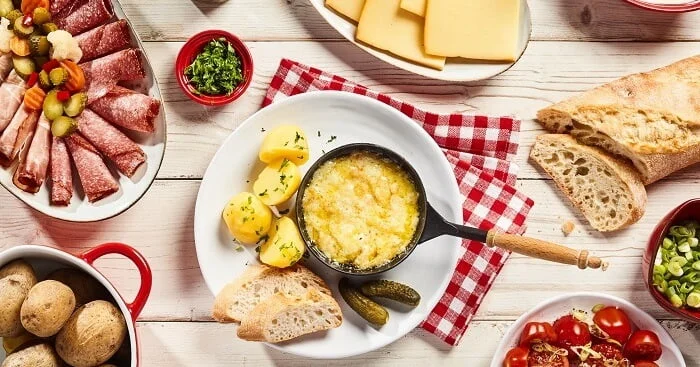Take Me to The Recipes
Switzerland, a landlocked country in Central Europe, boasts not only breathtaking landscapes but also a rich culinary heritage. Nestled amidst the Alps, Switzerland is renowned for its precision in both watchmaking and, of course, its delectable Swiss food.
This collection of iconic Swiss food recipes invites you to explore the rich culinary tapestry shaped by Switzerland’s history, geography, and traditions. Influenced by European trade routes, Swiss cuisine boasts diverse ingredients and techniques, showcased in dishes like Zürcher Geschnetzeltes and Cheese Fondue.
The alpine terrain inspires hearty meals, while lakes contribute freshwater fish. Swiss cuisine, characterized by simplicity and quality, emphasizes local produce and communal dining traditions like fondue. With an abundance of dairy, lean meats, and wholesome grains, Swiss cuisine aligns with a balanced lifestyle. While fondue symbolizes Swiss conviviality, the country’s unique ingredients, from Emmental cheese to Rösti potatoes, highlight the diverse and flavorful palette of Swiss cuisine.
Swiss Food – Key Takeaways
- Diverse Influences: Swiss cuisine reflects a fusion of German, French, and Italian influences, creating a unique culinary tapestry.
- Alpine Bounty: The country’s mountainous terrain influences the availability of ingredients, emphasizing dairy, cheese, and hearty dishes.
- Precision and Quality: Swiss cuisine is synonymous with precision and quality, mirroring the country’s reputation for excellence in various fields.
- Seasonal Freshness: The Swiss prioritize seasonal and locally sourced ingredients, ensuring the freshness and authenticity of their dishes.
- Fondue and Raclette: Fondue and raclette are iconic Swiss dishes, celebrated not just for their flavors but also for the conviviality they bring to social gatherings.
- Chocolate Mastery: Switzerland is world-renowned for its chocolate, showcasing a mastery of the sweet art form.
- Multicultural Fusion: Urban centers like Zurich and Geneva showcase a diverse culinary scene, influenced by global flavors and international cuisines.
Take Me to The Recipes!
The following articles may Interest you
- North and South American Cuisine – A Culinary Expedition
- European Cuisine: Savor the Continent’s Best Culinary Secrets!
- African Cuisine: Discover the Bold Flavors & Global Charm!
- Asian Cuisine Unlock its Secrets – Taste, Health & Global Influence!
- Oceania Cooking: A Culinary Journey Through the Pacific
Where is Switzerland?

Switzerland lies in the heart of Europe. It shares its 1,935km-long border with five countries: Italy, France, Germany, Austria and the Principality of Liechtenstein.

Index to Contents
- Take Me to The Recipes!
- Swiss History and Its Impact on Cuisine
- How Switzerland’s Climate and Geography Influence Swiss Food
- What is Swiss Food?
- Swiss Culinary Traditions
- Most Popular Swiss Dishes
- What Are the Health Implications of Swiss Food?
- Switzerland’s National Dish
- Exploring Swiss Ingredients
- Swiss Recipes You Can Try at Home
- Conclusion
- FAQ’s
We invite you to savor iconic Swiss Food recipes – Tantalize your taste buds by clicking on any image to open up the menu
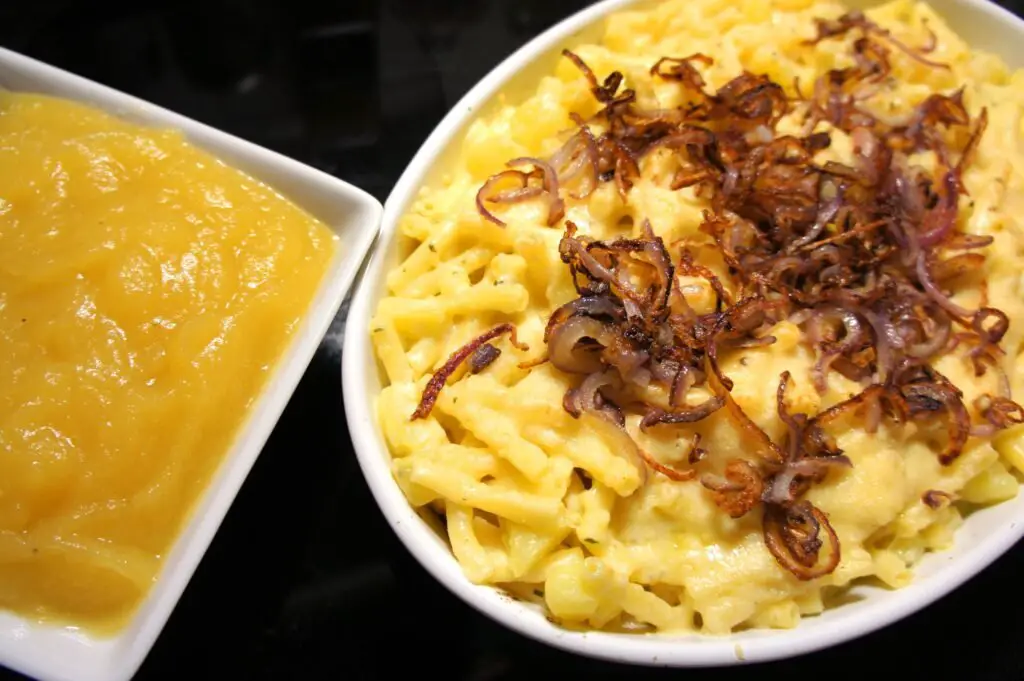
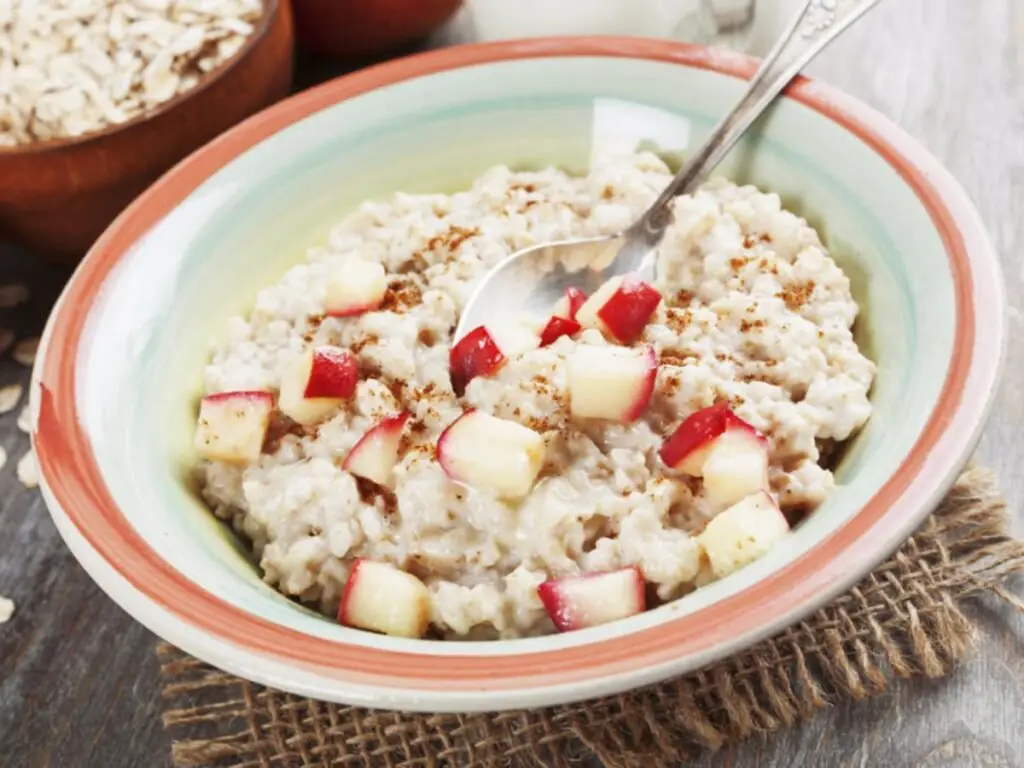
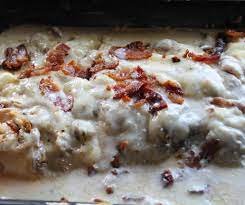
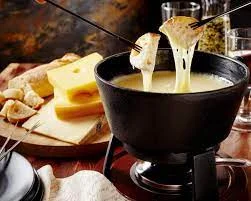
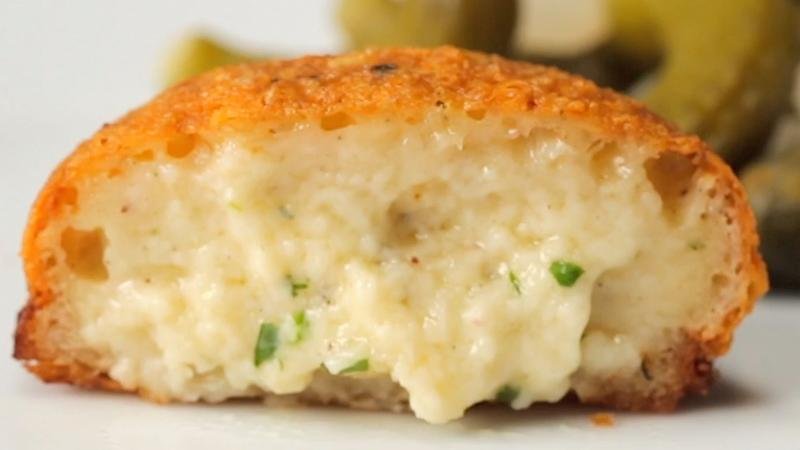

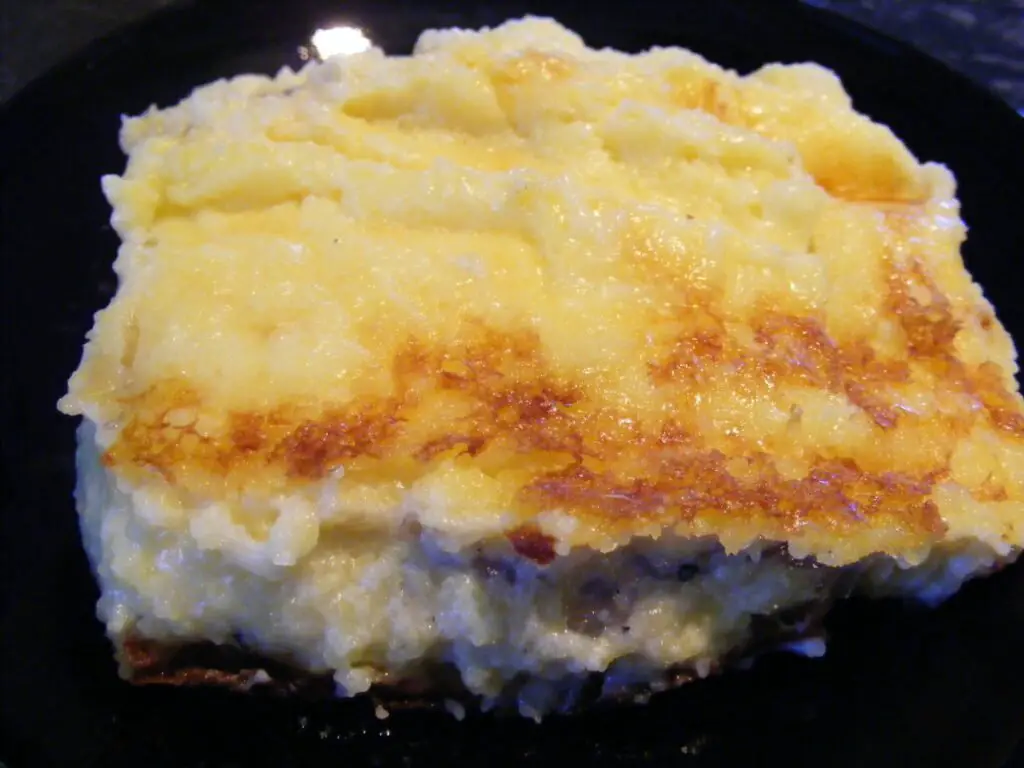

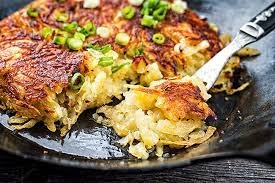
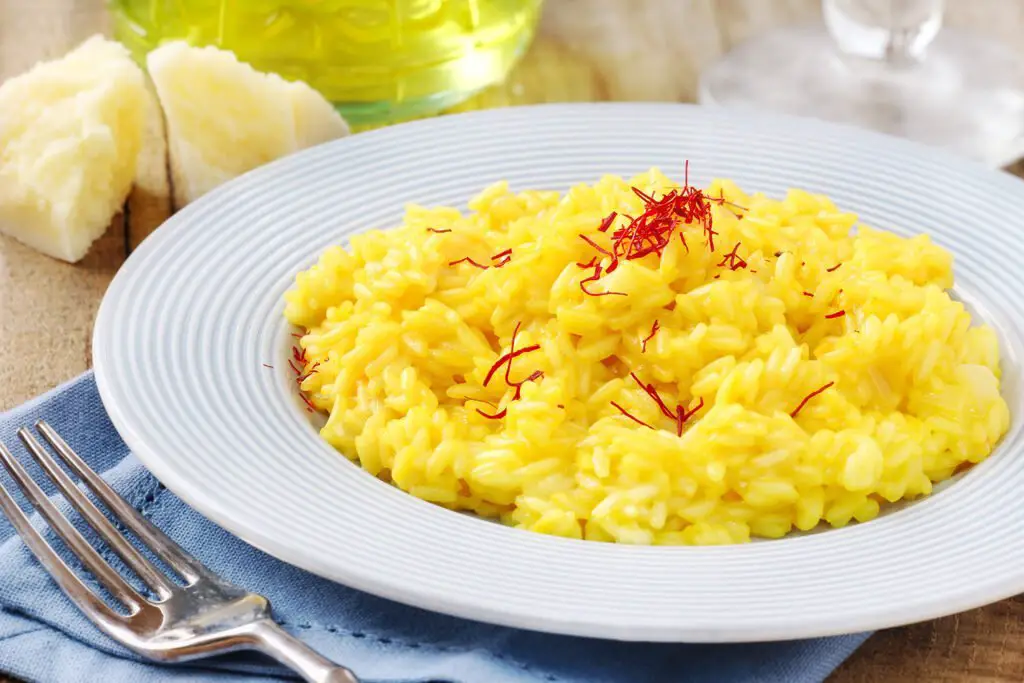
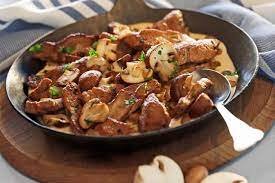
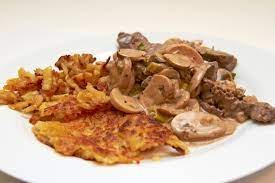
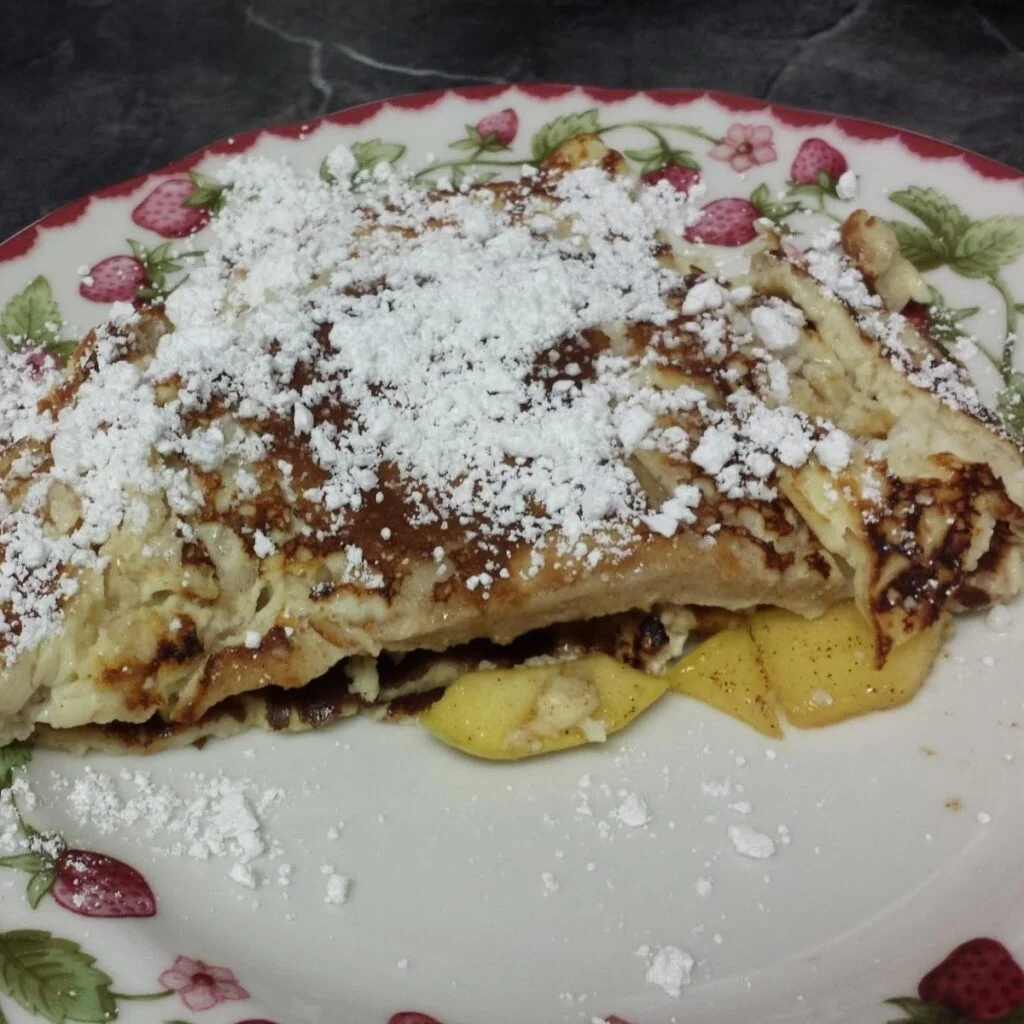
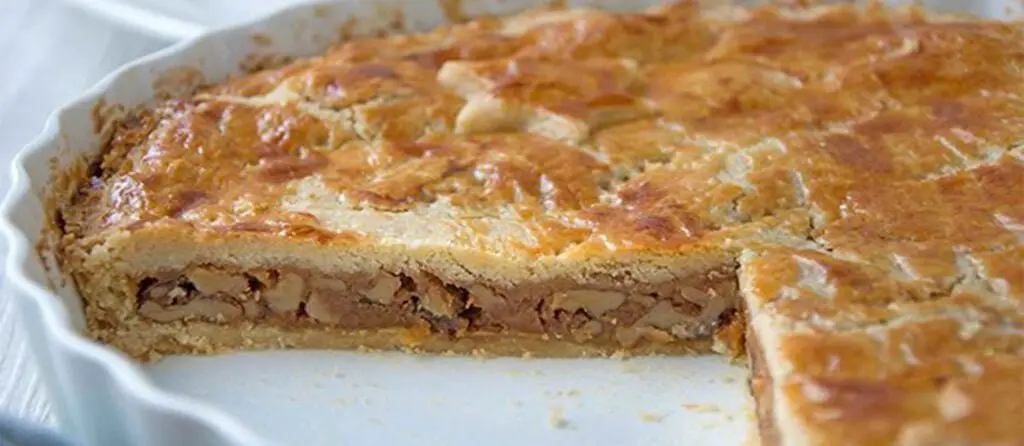
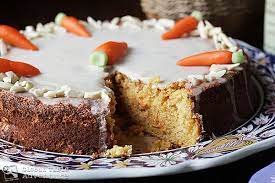



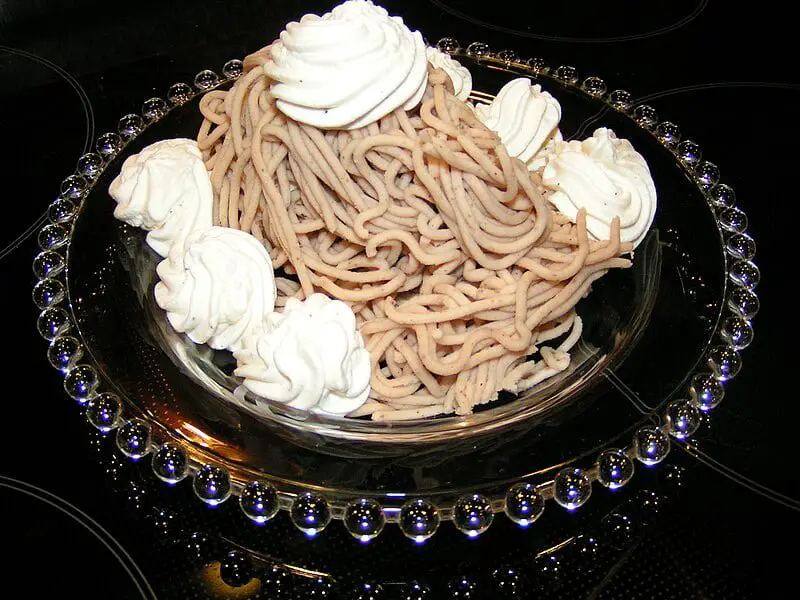
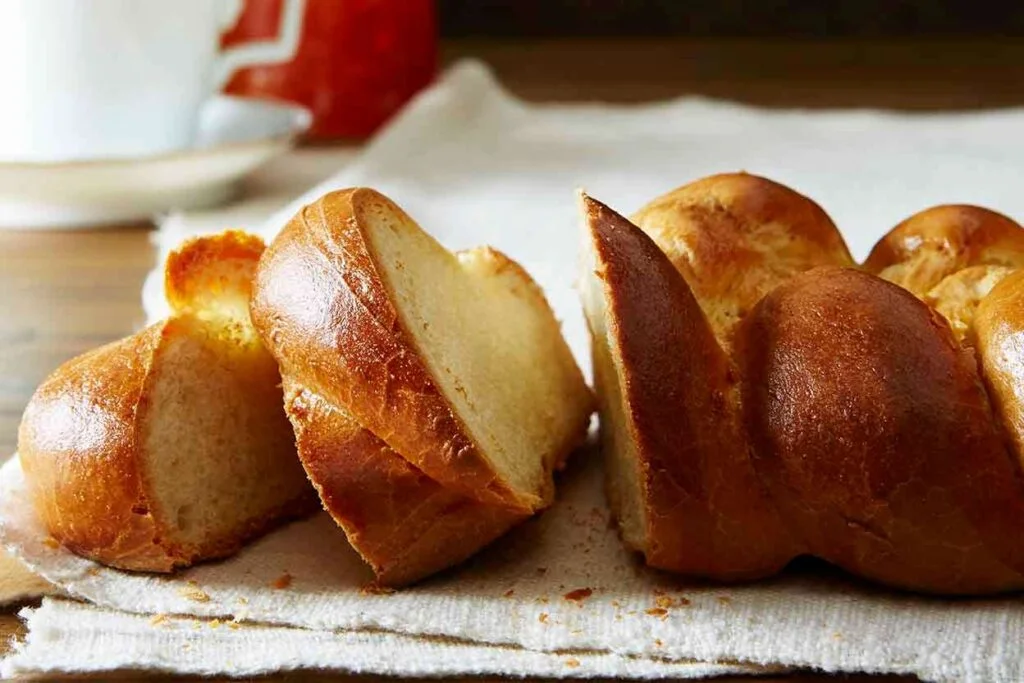
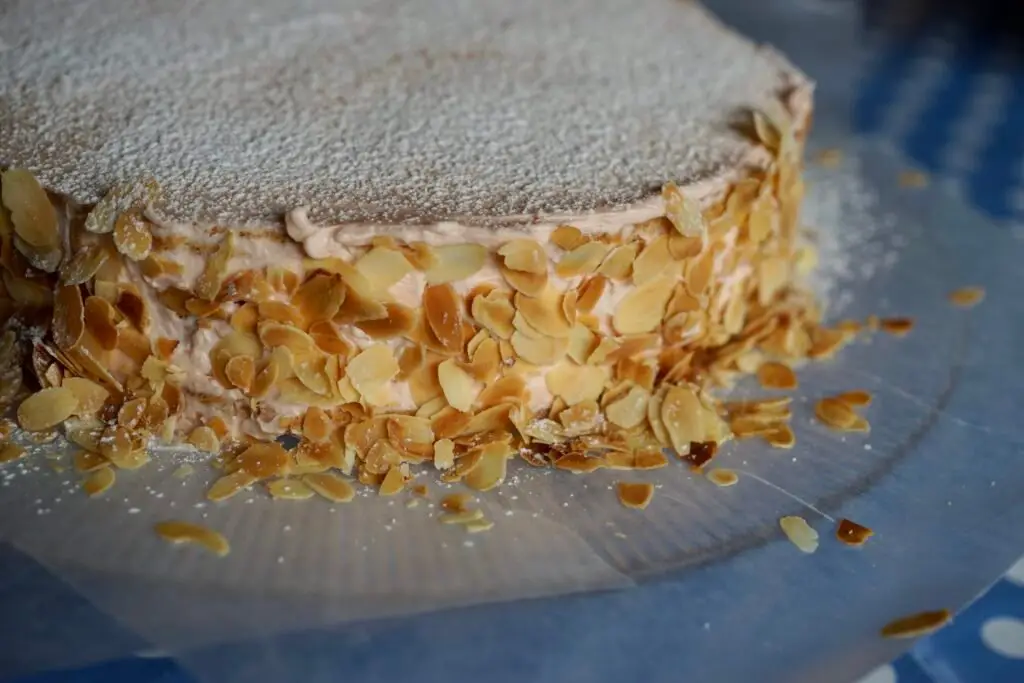
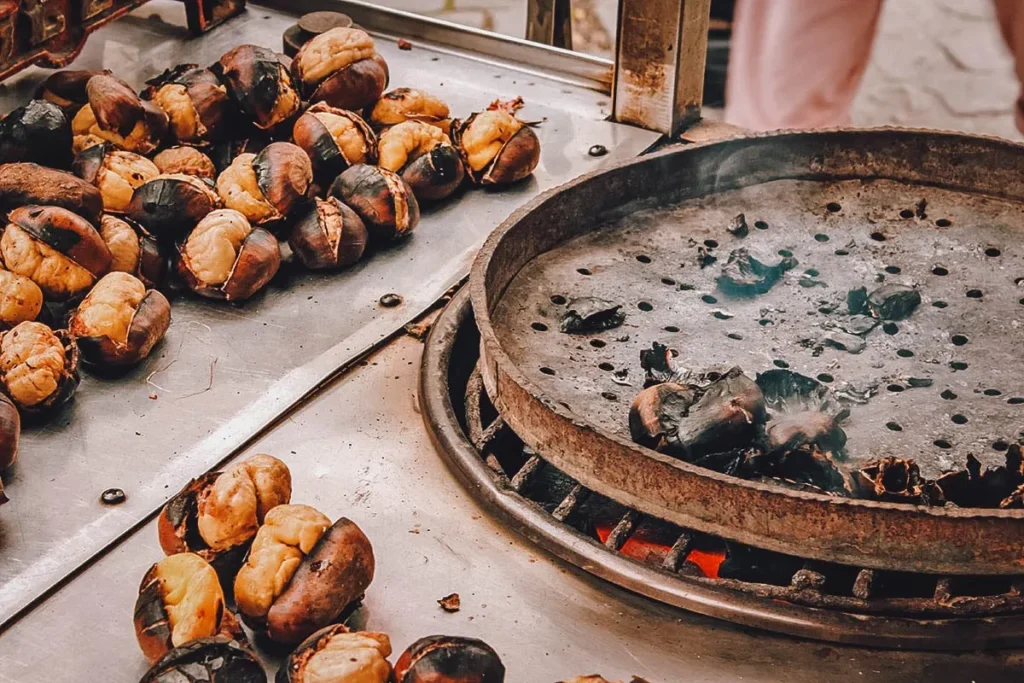
Swiss History and Its Impact on the Cuisine
Switzerland, a landlocked country in the heart of Europe, has a rich history shaped by a unique combination of geography, culture, and political influences. Its history has played a significant role in shaping Swiss food traditions, creating a culinary landscape that reflects both regional diversity and international influences.
Historical Overview of Switzerland
Switzerland Early History (8th century BC – 5th century AD)

Switzerland’s history dates back to prehistoric times, with evidence of human settlements found in various regions. The country’s central location made it a crossroads for different cultures and trade routes.
Switzerland Medieval Period (5th century – 15th century)

In the medieval period, Switzerland comprised various independent regions. The emergence of the Swiss Confederacy in the 13th century marked a key turning point, as local communities united for mutual defense against external threats.
Switzerland The Modern Period (19th century – present)

Switzerland underwent many political and social changes, such as the formation of the federal state, the industrialization, the World Wars, the neutrality, and the multiculturalism.
The country also experienced a process of globalization, which affected its food production and consumption. Switzerland’s cuisine became more diverse and international, with the adoption of dishes and ingredients from other countries, such as pizza, pasta, sushi, and kebab.
Switzerland‘s Neutral Stance (1815)
Switzerland’s policy of neutrality, established in the 19th century, has been a defining feature. This neutrality allowed the country to avoid major conflicts, contributing to its stability and prosperity.
Switzerland Cultural Influences
Switzerland’s cultural diversity is influenced by its multilingual population, with German, French, Italian, and Romansh as official languages. Each linguistic region has its own cultural identity, traditions, and, consequently, culinary influences.
Impact on Swiss Food
Swiss food reflects the country’s diverse cultural and geographical influences. Some key aspects of Switzerland’s history have impacted its culinary traditions:
Regional Diversity
Cantonal Cuisine: Each canton (administrative region) has its own distinct culinary traditions. For example, German-speaking regions may have hearty dishes like Rösti (potato fritters), while French-speaking areas may showcase fondue and raclette.
Agriculture and Geography
Mountainous Terrain: Switzerland’s mountainous landscape has influenced food availability and farming practices. Alpine cuisine often features dairy products, potatoes, and hearty dishes to sustain individuals in mountainous regions.
International Influences
Trade and Migration: Switzerland’s history as a crossroads for trade and migration has exposed its cuisine to various international influences. Italian, French, and German culinary elements can be found in Swiss dishes.
Modern Innovations
Globalization: The modern era has brought globalization and increased diversity to Swiss cuisine. Urban areas feature a wide range of international restaurants, reflecting a more cosmopolitan culinary scene.
How Switzerland’s Climate and Geography Influence Swiss Food
Switzerland’s climate and geography have a significant influence on its cuisine, as they determine the availability and variety of ingredients, as well as the cooking methods and traditions of each region. Here are some examples of how Switzerland’s climate and geography influence its cuisine:
The Alps

Switzerland is surrounded by the Alps, the Jura, and the Swiss Plateau, which create different climatic zones and agricultural conditions. The Alps are cold and snowy, and suitable for grazing cattle and sheep, which provide milk, cheese, and meat.
The Jura is hilly and forested, and ideal for growing fruits, nuts, and mushrooms. The Swiss Plateau is flat and fertile, and produces grains, vegetables, and wine
Switzerland is Landlocked

Switzerland is landlocked, which means that freshwater fish is more common than seafood. Fish is mainly consumed in the regions near the lakes and rivers, such as Geneva, Zurich, and Bern.
Some of the most popular fish dishes include fera (a white fish from Lake Geneva), zander (a perch-like fish from Lake Zurich), and trout (a salmon-like fish from the rivers)
Switzerland’s Neighbours‘
Switzerland is influenced by the cuisines of its neighboring countries, such as France, Italy, and Germany, and adapts them to its own local products and preferences. For example, in the French-speaking part of Switzerland, cheese dishes such as fondue and raclette are popular, as well as pastries such as croissants and meringues.
In the Italian-speaking part of Switzerland, pasta, polenta, and risotto are common, as well as dishes such as minestrone and osso buco. In the German-speaking part of Switzerland, bread, butter, cheese, and sausages are staples, as well as dishes such as rösti (fried grated potatoes) and zürcher geschnetzeltes (veal strips in cream sauce).
References
- Swiss cuisine – Eidgenössisches Departement für auswärtige …
- Swiss cuisine – Wikipedia
- Swiss Food: 25 Traditional Dishes from Switzerland to Try
- Switzerland – Multiculturalism, Cuisine, Alps
- Britannica : The Origin of the Swiss Cuisine – Cookinary
What is Swiss Food?
Swiss food embodies a harmonious blend of simplicity, precision, and quality. It revolves around fresh, seasonal ingredients, allowing the natural flavors to shine.
The essence of Swiss cooking lies in the celebration of local produce, meticulous preparation, and a deep appreciation for culinary traditions.
Most Popular Swiss Dishes
some of the most well-known and widely enjoyed dishes in Switzerland are:
- Cheese fondue: A melted cheese mixture, usually made with Gruyère and Vacherin Fribourgeois cheeses, garlic, white wine, and kirsch, served in a communal pot over a flame. Diners dip pieces of bread or potatoes into the cheese using long forks. Cheese fondue is a traditional dish that originated in the Alps and is popular in the winter
- Raclette: A semi-hard cheese that is melted over a fire or a special grill and scraped onto plates. Raclette is typically served with boiled potatoes, pickles, onions, and cured meats. Raclette is another Alpine dish that is ideal for cold weather and social gatherings
- Rösti: A crispy potato pancake that is made by grating cooked potatoes and frying them in a pan with butter or oil. Rösti can be eaten plain or with various toppings, such as cheese, bacon, eggs, or onions. Rösti is a common breakfast or side dish that originated in the German-speaking part of Switzerland
- Zürcher Geschnetzeltes: A dish of thinly sliced veal, mushrooms, and cream sauce, often served with rösti or spätzli (a type of pasta). Zürcher Geschnetzeltes is a classic dish from Zurich that is influenced by the French and German cuisines
References
- Swiss cuisine – Wikipedia
- Swiss Food: 25 Traditional Dishes from Switzerland to Try
- The Origin of the Swiss Cuisine – Cookinary
- Swiss Cuisine: An Insight into Switzerland’s Food Culture
Swiss Culinary Traditions
Swiss culinary traditions are the result of centuries of cultural and geographical influences, as well as the availability and diversity of local products. Some of the main characteristics of Swiss culinary traditions are:
Cheese and Dairy Products
The use of cheese and dairy products in various dishes, such as fondue, raclette, and cheese pies. Cheese making is an ancient and important practice in Switzerland, especially in the mountainous regions, where dairy farming is prevalent. Switzerland produces over 450 types of cheese, many of which are protected by a geographical indication (AOP)
Bread and Pastries
The importance of bread and pastries as staple foods and desserts. Bread is eaten with almost every meal, and comes in many shapes and flavors, such as Zopf, bürli, and birnbrot.
Pastries are also very popular, and often feature fruits, nuts, and chocolate, such as nusstorte, basler leckerli, and vermicelles
Meat Dishes
The diversity and regionalism of meat dishes, such as sausages, cured meats, and roasts. Meat dishes vary according to the local climate, culture, and availability of ingredients. For example, in the German-speaking part of Switzerland, sausages and cold cuts are common, such as cervelat, landjäger, and bündnerfleisch.
In the French-speaking part of Switzerland, meat dishes are more influenced by the French cuisine, such as saucisson vaudois, papet vaudois, and longeole.
Neighboring Cuisines
The influence of neighboring cuisines, such as French, Italian, and German, and the adaptation of their dishes to the Swiss taste and products. For example, in the Italian-speaking part of Switzerland, pasta, polenta, and risotto are common, but often made with Swiss cheese, such as alplermagronen, pizzoccheri, and risotto ticinese.
In the French-speaking part of Switzerland, dishes such as quiche, gratin, and soufflé are popular, but often made with Swiss cheese, such as quiche au gruyère, gratin de cardons, and soufflé au fromage.
What Are the Health Implications of Swiss Food?
Swiss food is a diverse and delicious culinary tradition that can have both positive and negative effects on health.
Some of the possible benefits of Swiss food
- It is rich in calcium and protein from cheese and dairy products, which can support bone health, muscle growth, and metabolism.
- It includes a variety of whole grains and nuts, such as rye, barley, and chestnuts, which can provide fiber, antioxidants, and healthy fats that can improve digestion, blood sugar control, and cholesterol levels.
- It incorporates freshwater fish as a source of protein, which can provide omega-3 fatty acids, iron, zinc, and other nutrients that can benefit the heart, brain, and blood.
Some of the possible drawbacks of Swiss food
- It is high in saturated fat and cholesterol from butter, cream, cheese, and meat, which can increase the risk of cardiovascular disease, obesity, and diabetes.
- It contains a lot of salt from cheese, cured meats, and bread, which can raise blood pressure, damage the kidneys, and increase the risk of stroke and heart failure.
- It may lack some essential nutrients, such as vitamin D, folate, and vitamin C, due to the limited intake of fruits and vegetables, especially in the winter.
References
- Cheese | The Nutrition Source | Harvard T.H. Chan School of Public Health
- Dairy | The Nutrition Source | Harvard T.H. Chan School of Public Health
- Whole Grains | The Nutrition Source | Harvard T.H. Chan School of Public Health
- Nuts | The Nutrition Source | Harvard T.H. Chan School of Public Health
- Saturated Fat | The Nutrition Source
- Swiss Nutrition Atlas: How balanced is the diet of the Swiss population?
Switzerland’s National Dish
Switzerland doesn’t have a singular national dish, but fondue is often considered a cultural symbol. This communal dish, featuring melted cheese and shared dipping, represents the essence of Swiss conviviality.
Exploring Swiss Ingredients: The Flavors of Swiss Food
Swiss cuisine is characterized by its diverse range of ingredients, reflecting the country’s geographical and cultural diversity. Here are some key ingredients commonly used in Swiss food:
1. Cheese:
- Emmental: A mild and nutty-flavored cheese, famous for its characteristic holes. It is commonly used in dishes like fondue and Rösti.
- Gruyère: A firm and flavorful cheese with a slightly sweet and salty taste. Gruyère is a crucial component of traditional Swiss fondue.
- Appenzeller: A pungent and robust cheese, often used in both cooking and as a table cheese.
2. Chocolate:
- Swiss Chocolate: Switzerland is renowned for its high-quality chocolate. The Swiss are masters of chocolate-making, producing a wide array of milk, dark, and white chocolates.
3. Potatoes:
- Rösti: Grated and pan-fried potatoes, forming a crispy and golden-brown dish. Rösti is a Swiss comfort food often served as a side or as a main dish.
4. Bread:
- Swiss Bread: Different varieties of bread are integral to Swiss cuisine. Traditional Swiss bread includes rustic, hearty loaves made with a mix of grains.
5. Dairy Products:
- Milk and Cream: Swiss dairy products are of high quality due to the country’s emphasis on dairy farming. Milk and cream are used in various culinary applications.
6. Meat:
- Sausages: Swiss sausages, like cervelat and bratwurst, are popular and often served grilled or boiled.
- Veal: Commonly used in Swiss dishes, particularly in Zurich-style veal in cream sauce.
7. Fresh Produce:
- Potatoes: Apart from being a key ingredient in Rösti, potatoes are widely used in Swiss cuisine in various forms.
- Apples: Switzerland is known for its apple orchards, and apples are used in both sweet and savory dishes.
8. Herbs and Spices:
- Herbs: Common herbs like parsley, chives, and thyme are used to enhance flavors in Swiss dishes.
- Nutmeg: A spice often grated into creamy dishes, such as cheese fondue or béchamel sauce.
9. Seafood:
- Lake Fish: Fish from Swiss lakes, such as perch and trout, are enjoyed in regions with abundant freshwater resources.
10. Wine:
- Swiss Wine: Switzerland is home to various vineyards, producing excellent white and red wines. Swiss wines complement the local cuisine.
11. Fresh Berries:
- Berries: Strawberries, raspberries, and blueberries are popular during the summer months and are used in desserts, jams, and sauces.
12. Grains:
- Barley and Oats: Traditional Swiss dishes may incorporate barley or oats, especially in soups and stews.
Swiss Recipes You Can Try at Home
Read enough? The following are a few mouthwatering Swiss food recipes that you can try at home!
Starter Courses
Swiss Cuisine – Zürcher Geschnetzeltes (Zurich-style Sliced Meat)

Swiss Food – History and Background
Zürcher Geschnetzeltes, translating to “Zurich-style sliced meat,” is a beloved Swiss dish originating from the vibrant city of Zurich. This culinary gem has roots in traditional Swiss cuisine, celebrated for its simplicity, rich flavors, and cultural significance.
The dish gained popularity in the mid-20th century and has since become a staple in Swiss households and restaurants.
Swiss Food – Ingredients
- 500g veal, thinly sliced
- 2 onions, finely chopped
- 200g mushrooms, sliced
- 200ml cream
- 100ml white wine
- 2 tablespoons butter
- 2 tablespoons all-purpose flour
- Salt and pepper to taste
- Fresh parsley, chopped (for garnish)
Swiss Cuisine – Recipe
Preparation
- Season the veal slices with salt and pepper.
- In a mixing bowl, toss the veal with flour until evenly coated.
Sautéing
- In a large skillet, melt 1 tablespoon of butter over medium-high heat.
- Add the veal slices and sauté until browned. Remove the veal from the skillet and set it aside.
Mushroom and Onion Mix
- In the same skillet, add the remaining butter.
- Sauté the chopped onions until translucent.
- Add the sliced mushrooms and cook until they release their moisture.
Deglazing
- Pour in the white wine to deglaze the pan, scraping up any flavorful bits from the bottom.
- Allow the wine to reduce by half.
Bringing It Together
- Return the sautéed veal to the skillet.
- Pour in the cream, stirring gently to combine.
- Simmer on low heat until the veal is cooked through, and the sauce reaches a creamy consistency.
Seasoning
- Taste and adjust the seasoning with salt and pepper as needed.
Serving
- Sprinkle chopped fresh parsley over the Zürcher Geschnetzeltes for a burst of color and freshness.
- Serve immediately, traditionally accompanied by Rösti (Swiss potato pancakes) or noodles.
Presentation
Zürcher Geschnetzeltes is typically served in a warm dish, with the creamy veal and mushroom sauce generously spooned over Rösti or noodles. The vibrant parsley garnish adds a touch of elegance.
Drinks
Pair this delightful Swiss dish with a crisp Swiss white wine or a refreshing local beer to complement its rich flavors.
Enjoy the flavors of Zurich with this classic Zürcher Geschnetzeltes recipe, a testament to the heartwarming traditions of Swiss cuisine.
Swiss Food – Chicken Bacon Swiss Recipe

Chicken Bacon Swiss Recipe – History and Background
The Chicken Bacon Swiss recipe is a delightful fusion of flavors, combining the savory goodness of chicken and bacon with the rich and nutty taste of Swiss cheese. While not originating from Switzerland, this dish embodies the spirit of Swiss cuisine, which often features high-quality and locally sourced ingredients. This recipe has become a favorite, offering a comforting and hearty meal that brings people together around the table.
Swiss Food – Chicken Bacon Swiss Recipe – Ingredients
For the Chicken:
- 4 boneless, skinless chicken breasts
- Salt and pepper to taste
- 1 teaspoon garlic powder
- 1 teaspoon onion powder
- 1 teaspoon paprika
- 2 tablespoons olive oil
The Bacon:
- 8 slices of bacon
For the Swiss Cheese Sauce:
- 1 cup Swiss cheese, shredded
- 1 cup Gruyère cheese, shredded
- 1 cup heavy cream
- 2 tablespoons unsalted butter
- 2 tablespoons all-purpose flour
- Salt and pepper to taste
Swiss Food – Chicken Bacon Swiss Recipe – Recipe
Preparing the Chicken
- Preheat the oven to 200°C (400°F).
- Season chicken breasts with salt, pepper, garlic powder, onion powder, and paprika.
- In an oven-safe skillet, heat olive oil over medium-high heat.
- Sear the chicken breasts until golden brown on both sides.
Cooking the Bacon
- In a separate pan, cook the bacon until crispy.
- Set aside on paper towels to drain excess grease.
Making the Swiss Cheese Sauce
- In the same skillet used for chicken, melt butter over medium heat.
- Add flour and whisk until smooth, creating a roux.
- Gradually pour in heavy cream, stirring continuously until the mixture thickens.
- Reduce heat to low and add shredded Swiss and Gruyère cheese. Stir until melted.
- Season with salt and pepper to taste.
Assembling
- Place the seared chicken breasts back into the skillet.
- Top each chicken breast with Swiss cheese sauce.
- Wrap each chicken breast with two slices of cooked bacon.
Baking
- Bake in the preheated oven for 20-25 minutes or until the chicken is cooked through.
- For a golden finish, broil for an additional 2-3 minutes.
Serving
- Spoon additional Swiss cheese sauce over the chicken before serving.
- Garnish with chopped parsley if desired.
Chicken Bacon Swiss Recipe – Presentation
Serve the Chicken Bacon Swiss on a platter, drizzled with the luscious Swiss cheese sauce. The combination of crispy bacon, juicy chicken, and melted Swiss cheese makes for an inviting and comforting presentation.
Drinks:
Pair this savory dish with a light and refreshing Swiss white wine or a sparkling water with a splash of lemon for a delightful balance.
Swiss Food – Aargauer Rüeblitorte (Carrot Cake from Aargau)

Swiss Food – Aargauer Rüeblitorte – History and Background
Aargauer Rüeblitorte, or Aargau Carrot Cake, hails from the Swiss canton of Aargau. This delightful cake has deep roots in Swiss culinary traditions and is especially popular during celebrations and holidays.
The use of carrots in a dessert may seem unconventional, but Aargauer Rüeblitorte beautifully combines the earthy sweetness of carrots with the richness of honey and nuts, creating a unique and beloved treat.
Swiss Food – Aargauer Rüeblitorte Ingredients
- 300g carrots, finely grated
- 200g ground almonds
- 200g sugar
- 4 large eggs
- 1 lemon (zest)
- 1 tablespoon lemon juice
- 200g all-purpose flour
- 2 teaspoons baking powder
- 1 pinch of salt
- 1 teaspoon ground cinnamon
- 1/2 teaspoon ground nutmeg
- 150g butter, melted
- 100g honey
Swiss Cuisine – Aargauer Rüeblitorte Recipe
Preparing Carrots:
- Peel and finely grate the carrots.
- Preheat the oven to 180°C (350°F) and grease a round cake pan.
Mixing Dry Ingredients
- In a bowl, combine ground almonds, sugar, flour, baking powder, salt, cinnamon, and nutmeg.
Creating Batter
- In a separate large bowl, whisk together eggs, lemon zest, and lemon juice until frothy.
- Gradually add the dry ingredient mixture, stirring to combine.
- Add the melted butter and honey, continuing to mix until smooth.
- Gently fold in the grated carrots.
Baking
- Pour the batter into the greased cake pan.
- Bake in the preheated oven for approximately 45-50 minutes or until a toothpick inserted into the center comes out clean.
Cooling
- Allow the cake to cool in the pan for 10 minutes before transferring it to a wire rack to cool completely.
Optional: Icing or Decoration
- You can leave the cake plain or, if desired, top it with a cream cheese icing or a dusting of powdered sugar.
Swiss Cuisine – Aargauer Rüeblitorte Presentation
Serve Aargauer Rüeblitorte in slices, highlighting the vibrant orange color of the carrot cake. Its moist and nutty texture is a testament to the wholesome ingredients used in this traditional Swiss dessert.
Swiss food – Main Courses – Rösti

Swiss Food – Rösti – History and Background:
Rösti, a quintessential Swiss dish, traces its origins to the canton of Bern, where it emerged as a simple and hearty meal for farmers. Initially served as a breakfast item, Rösti gained popularity across Switzerland for its golden crispiness and comforting flavor.
Over the years, it has become a symbol of Swiss comfort food, celebrated both nationally and internationally.
Swiss cuisine Rösti – Ingredients
- 4 large potatoes, peeled and grated
- 1 onion, finely chopped
- 2 tablespoons butter
- 2 tablespoons vegetable oil
- Salt and pepper to taste
Swiss Food Rösti – Recipe
Grating Potatoes:
- Peel the potatoes and grate them using a coarse grater.
- Place the grated potatoes in a clean kitchen towel and squeeze out any excess moisture.
- In a bowl, combine the grated potatoes with the finely chopped onion.
- Season generously with salt and pepper, mixing well.
Preparing the Pan:
- In a large skillet, heat the butter and vegetable oil over medium heat until the butter is melted and sizzling.
Forming the Rösti:
- Spread the potato mixture evenly in the skillet, pressing it down with a spatula to create a compact pancake.
- Cook over medium heat for 15-20 minutes or until the bottom is golden brown and crispy.
Flipping the Rösti:
- Place a large plate over the skillet and carefully invert the Rösti onto the plate.
- Add more butter and oil to the skillet, then slide the Rösti back into the pan, uncooked side down.
- Cook for an additional 15-20 minutes until the second side is also golden brown and crispy.
Serving:
- Slide the Rösti onto a serving plate.
- Cut into wedges and serve immediately.
Swiss cuisine Rösti – Presentation
Serve Rösti as a side dish to complement various main courses, or enjoy it on its own as a comforting and satisfying meal. Its crispy exterior and tender interior make it a delightful addition to any Swiss dining experience.
Drinks:
Pair Rösti with a Swiss lager or a crisp apple cider for a refreshing accompaniment that enhances the overall dining experience.
Savor the crispy goodness of Rösti, a classic Swiss creation that has stood the test of time, embodying the essence of Swiss comfort and culinary excellence.
Swiss food – Main Courses – Cheese Fondue
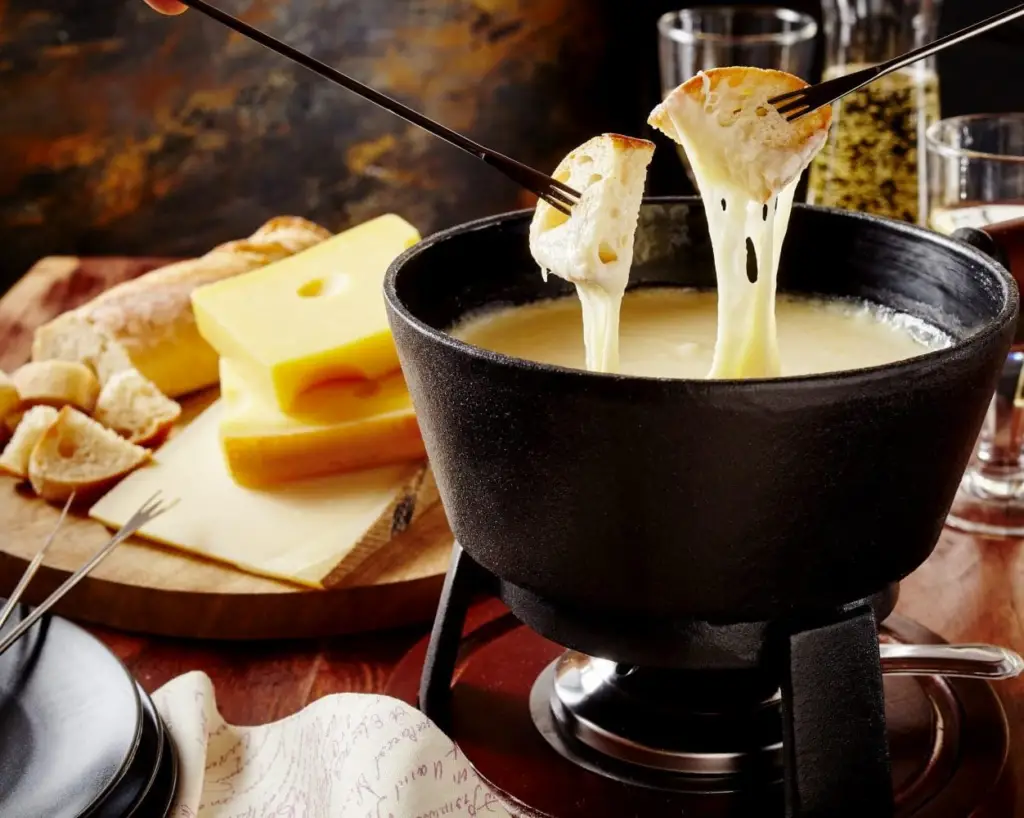
Swiss cuisine – Cheese Fondue – History and Background:
Cheese Fondue, a cultural icon of Swiss cuisine, originated in the Alpine regions of Switzerland. Its roots can be traced back to the late Middle Ages when Swiss villagers, faced with long winters and limited resources, developed a communal way of utilizing stale bread and aged cheese.
Today, Cheese Fondue has evolved into a cherished social dish enjoyed in homes and restaurants across Switzerland and around the world.
Swiss food – Cheese Fondue – Ingredients
- 200g Gruyère cheese, grated
- 200g Emmental cheese, grated
- 1 clove garlic, peeled
- 300ml dry white wine
- 1 tablespoon lemon juice
- 1 tablespoon cornstarch
- 1 tablespoon Kirsch (cherry brandy)
- A pinch of nutmeg
- A pinch of white pepper
- 1 French baguette, cubed (for dipping)
Swiss food – Cheese Fondue – Recipe
1. Preparing the Cheese:
- Grate the Gruyère and Emmental cheese.
- Rub the inside of the fondue pot with the peeled garlic clove.
2. Making the Cheese Mixture:
- In the fondue pot, heat the white wine and lemon juice over medium heat.
- Gradually add the grated cheese, stirring continuously in a figure-eight motion until melted and smooth.
3. Creating the Cornstarch Mixture:
- In a small bowl, mix the cornstarch with Kirsch to form a smooth paste.
- Add the cornstarch mixture to the cheese, stirring until the fondue achieves a creamy consistency.
4. Seasoning:
- Season the fondue with a pinch of nutmeg and white pepper, adjusting to taste.
5. Serving:
- Place the fondue pot on the table over a low flame to keep the mixture warm.
- Spear cubes of French baguette onto fondue forks and dip into the melted cheese.
Swiss food – Cheese Fondue – Presentation
Serve Cheese Fondue in a traditional fondue pot, keeping it warm throughout the meal. The communal experience of dipping and sharing adds to the convivial atmosphere of the fondue tradition.
Drinks:
Pair Cheese Fondue with a dry white wine or, for an authentic touch, enjoy it with a glass of Fendant, a Swiss white wine.
Experience the warmth and camaraderie of Swiss dining with this classic Cheese Fondue recipe, a timeless dish that brings people together in celebration of good food and good company.
Swiss food – Raclette
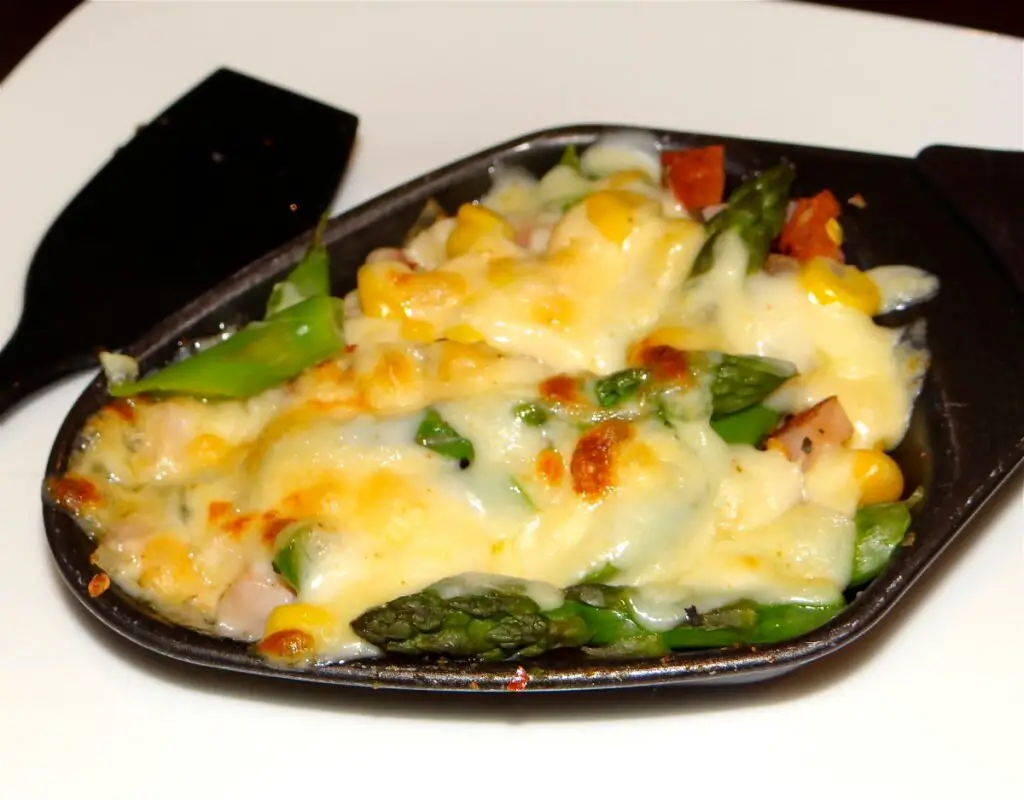
History and Background of Raclette
Raclette, a classic Swiss dish, has a rich history rooted in the Alpine regions of Switzerland. The name “raclette” comes from the French word “racler,” meaning “to scrape.” Traditionally, shepherds would melt a wheel of cheese by an open fire, and then scrape the melted layer onto boiled potatoes and other accompaniments.
Today, raclette has become a popular Swiss social dish, often enjoyed during festive gatherings with family and friends.
Swiss food – Raclette Ingredients
- 1 wheel of raclette cheese
- Boiled potatoes, sliced
- Pickles, gherkins, or pickled onions
- Cured meats such as prosciutto, ham, or salami
- Fresh vegetables like cherry tomatoes or bell peppers
- Freshly ground black pepper
Swiss food – Raclette Recipe
1. Prepare Ingredients
- Boil the potatoes until tender and slice them into bite-sized pieces.
- Slice the pickles, gherkins, or pickled onions.
- Arrange cured meats on a platter.
- Prepare fresh vegetables like cherry tomatoes or bell peppers.
2. Set Up Raclette Grill
- Place the raclette cheese wheel in the designated holder of the raclette grill.
- Heat the grill until the cheese starts to melt.
3. Scrape and Serve
- Once the cheese is melted and bubbly, use a raclette scraper or knife to scrape the melted layer onto individual plates.
- Serve the scraped cheese over boiled potatoes, cured meats, sliced pickles, and fresh vegetables.
4. Season and Enjoy
- Sprinkle freshly ground black pepper over the melted cheese.
- Enjoy the raclette with a variety of accompaniments.
Serving Information
- Serves: 4
- Estimated Cooking Time: 20 minutes
- Calories: Approximately 400 calories per serving (may vary based on specific ingredients and portions).
Raclette is a delightful Swiss dish that brings people together to share a warm and comforting meal. Its history is steeped in Alpine traditions, making it a cherished part of Swiss culinary culture.
Swiss food – Marroni

History and Background of Marroni
Marroni, a beloved Swiss street food, are roasted chestnuts that have been a part of Swiss culture for centuries. Originating in the Alpine regions, particularly during the colder months, Marroni hold a special place in Swiss culinary traditions.
Roasting chestnuts over open fires during festivals and winter markets has become a cherished experience, offering warmth and a delightful nutty flavor.
Swiss food – Marroni Ingredients
- Fresh chestnuts
Swiss food – Marroni Recipe
1. Preparing the Chestnuts
- Preheat the oven to 400°F (200°C).
- Using a sharp knife, make a small, cross-shaped incision on the flat side of each chestnut.
2. Roasting the Marroni
- Place the prepared chestnuts on a baking sheet, with the incisions facing up.
- Roast in the preheated oven for 20-25 minutes, or until the shells peel back.
3. Peeling and Serving
- Once roasted, remove the chestnuts from the oven.
- While still warm, peel the shells and the thin inner skin from the chestnuts.
- Serve the Marroni in a paper cone or bowl for a delightful street food experience.
Serving Information
- Serves: 4
- Estimated Cooking Time: 25 minutes
- Calories: Approximately 100 calories per 100 grams of chestnuts (may vary based on specific portions).
Marroni, with their warm aroma and nutty taste, embody the coziness of Swiss winter traditions. Whether enjoyed at festive gatherings or purchased from street vendors, these roasted chestnuts are a simple yet cherished part of Swiss culinary heritage.
Swiss food – Riz Casimir

History and Background of Riz Casimir
Riz Casimir, a classic Swiss dish, originated in the mid-20th century and is named after the Swiss Federal Councilor Georges-André Chevallaz. Chevallaz’s personal chef, who was inspired by the flavors of the renowned Indian curry, created this dish.
Riz Casimir is a flavorful and slightly sweet curry dish that reflects Switzerland’s openness to global influences in its culinary landscape.
Swiss food – Riz Casimir Ingredients
- 1 cup basmati rice
- 1 lb chicken breast, cut into bite-sized pieces
- 1 onion, finely chopped
- 2 cloves garlic, minced
- 1 cup pineapple chunks (fresh or canned)
- 1 red bell pepper, sliced
- 1/2 cup heavy cream
- 1/4 cup white wine
- 2 tbsp curry powder
- 2 tbsp vegetable oil
- Salt and pepper, to taste
- Fresh parsley, chopped (for garnish)
Swiss food – Riz Casimir Recipe
1. Cook Basmati Rice
- Rinse basmati rice under cold water until the water runs clear.
- Cook rice according to package instructions.
2. Sauté Chicken
- Season chicken pieces with salt, pepper, and curry powder.
- In a pan, heat vegetable oil and sauté chicken until browned and cooked through.
- Remove chicken from the pan and set aside.
3. Sauté Aromatics
- In the same pan, sauté finely chopped onion and minced garlic until softened.
- Add sliced red bell pepper and continue to cook until tender.
4. Add Pineapple and White Wine
- Incorporate pineapple chunks into the pan, stirring gently.
- Pour in white wine and let it simmer for a couple of minutes.
5. Introduce Chicken and Cream
- Return the cooked chicken to the pan.
- Pour in heavy cream and stir until the mixture is well combined.
- Simmer for 5-7 minutes until the flavors meld.
6. Season and Garnish
- Adjust the seasoning with salt, pepper, and additional curry powder if desired.
- Garnish Riz Casimir with chopped fresh parsley.
7. Serve
- Spoon Riz Casimir over cooked basmati rice.
- Serve warm.
Serving Information
- Serves: 4
- Estimated Cooking Time: 40 minutes
- Calories: Approximately 500 calories per serving (may vary based on specific ingredients and portions).
Riz Casimir is a testament to Switzerland’s culinary diversity, blending Indian curry inspiration with Swiss ingredients. This flavorful dish has become a beloved part of Swiss cuisine, showcasing the country’s openness to global flavors.
Swiss Food – Zuger Kirschtorte

History and Background of Zuger Kirschtorte
Zuger Kirschtorte, a renowned Swiss dessert, hails from the town of Zug. Created in 1921 by a Zug pastry chef, Heinrich Höhn, this layered cherry and almond cake quickly gained popularity.
The cake’s signature touch is the use of Kirsch, a Swiss cherry brandy, which imparts a distinctive flavor. Zuger Kirschtorte has become a symbol of Zug’s culinary heritage and is cherished for its rich taste and historical significance.
Swiss Food – Zuger Kirschtorte Ingredients
Cake:
- 1 cup unsalted butter, softened
- 1 cup granulated sugar
- 4 large eggs
- 1 cup all-purpose flour
- 1 cup ground almonds
- 1 tsp baking powder
Filling:
- 2 cups cherries, pitted
- 1/2 cup granulated sugar
- 2 tbsp cornstarch
- 1/4 cup Zuger Kirsch (cherry brandy)
Frosting:
- 2 cups heavy cream
- 1/4 cup confectioners’ sugar
- 1/4 cup Zuger Kirsch (cherry brandy)
Swiss Food – Zuger Kirschtorte Recipe
1. Prepare the Cake
- Preheat the oven to 350°F (180°C). Grease and flour two 9-inch round cake pans.
- In a large bowl, cream together softened butter and sugar until light and fluffy.
- Add eggs one at a time, beating well after each addition.
- In a separate bowl, whisk together flour, ground almonds, and baking powder.
- Gradually add the dry ingredients to the wet ingredients, mixing until just combined.
- Divide the batter evenly between the prepared pans and smooth the tops.
- Bake for 25-30 minutes or until a toothpick inserted into the center comes out clean.
- Allow the cakes to cool completely.
2. Make the Filling
- In a saucepan, combine pitted cherries, sugar, and cornstarch.
- Cook over medium heat until the mixture thickens.
- Remove from heat and stir in Zuger Kirsch.
- Let the filling cool.
3. Assemble the Cake
- Place one cake layer on a serving plate.
- Spread the cherry filling over the first layer.
- Top with the second cake layer.
4. Prepare the Frosting
- In a mixing bowl, whip heavy cream until soft peaks form.
- Add confectioners’ sugar and Zuger Kirsch, continuing to whip until stiff peaks form.
5. Frost the Cake
- Frost the top and sides of the assembled cake with the whipped cream mixture.
- Optional: Decorate with additional cherries or almond slices.
6. Chill and Serve
- Refrigerate the Zuger Kirschtorte for at least 4 hours before serving to allow the flavors to meld.
- Slice and serve chilled.
Serving Information
- Serves: 10
- Estimated Cooking Time: 1 hour (plus cooling and chilling time)
- Calories: Approximately 400 calories per serving (may vary based on specific ingredients and portions).
Zuger Kirschtorte is a delightful treat, combining the sweetness of cherries and the richness of almonds with a touch of Swiss cherry brandy. This iconic dessert reflects Zug’s culinary expertise and remains a beloved part of Swiss pastry traditions.
Swiss Food – Polenta (Cornmeal)

History and Background of Polenta (Cornmeal)
Polenta, a staple in Swiss and Italian cuisine, has a rich history dating back to ancient times. Originating from the northern regions of Italy and the Alpine areas, polenta was once considered a peasant’s dish due to its simple ingredients, mainly cornmeal and water.
Over time, it evolved into a versatile and beloved dish, gaining popularity in various European cuisines. In Switzerland, polenta is embraced for its comforting texture and ability to complement a wide array of dishes.
Swiss food – Polenta (Cornmeal) Ingredients
- 1 cup cornmeal
- 4 cups water
- 1 tsp salt
- 2 tbsp butter (optional)
- Grated Parmesan cheese (optional)
Swiss food – Polenta (Cornmeal) Recipe
1. Boil Water
- In a large saucepan, bring 4 cups of water to a boil.
2. Add Cornmeal
- Gradually whisk in the cornmeal, stirring continuously to avoid lumps.
- Reduce the heat to low.
3. Cook Polenta
- Add salt to the mixture and let the polenta simmer on low heat.
- Stir frequently to prevent sticking.
4. Continue Cooking
- Cook the polenta for approximately 25-30 minutes until it reaches a creamy consistency.
- If using butter, stir it into the polenta until melted.
5. Serve
- Once the polenta is creamy and cooked, remove it from the heat.
- Serve hot as a soft and comforting side dish.
6. Optional Parmesan Topping
- If desired, sprinkle grated Parmesan cheese on top before serving for added flavor.
Serving Information
- Serves: 4
- Estimated Cooking Time: 30 minutes
- Calories: Approximately 150 calories per serving (may vary based on specific ingredients and portions).
Polenta is a versatile dish that can be served as a side or a base for various toppings. Its humble origins and adaptability make it a cherished part of Swiss and Italian culinary traditions.
Swiss food – Birchermüesli

History and Background of Birchermüesli
Birchermüesli, a popular Swiss dish, was created by Swiss physician Maximilian Bircher-Brenner in the early 20th century. Originally designed as a healthful dish, it aimed to encourage a diet rich in fresh fruits and whole grains.
Birchermüesli has since become a breakfast staple in Switzerland and beyond, celebrated for its simplicity, nutrition, and refreshing taste.
Swiss food – Birchermüesli Ingredients
- 1 cup rolled oats
- 1 cup plain yogurt
- 1 cup milk
- 2 apples, grated
- 1 cup mixed berries (strawberries, blueberries, raspberries)
- 1/2 cup nuts (almonds, hazelnuts), chopped
- 2 tablespoons honey
- Juice of 1 lemon
- Fresh mint leaves for garnish
Swiss food – Birchermüesli Recipe
1. Prepare Rolled Oats
- In a large bowl, combine rolled oats, yogurt, and milk.
- Mix well and let it sit in the refrigerator overnight for the oats to absorb the liquid.
2. Grate Apples
- Grate two apples and immediately mix them with lemon juice to prevent browning.
3. Assemble Birchermüesli
- Add the grated apples to the soaked oats mixture.
- Incorporate mixed berries and chopped nuts.
4. Sweeten with Honey
- Drizzle honey over the mixture for sweetness.
- Stir all ingredients together until well combined.
5. Chill and Serve
- Let the Birchermüesli chill in the refrigerator for at least 30 minutes.
- Serve the Birchermüesli in individual bowls or glasses.
6. Garnish and Enjoy
- Garnish each serving with fresh mint leaves for added freshness.
- Birchermüesli can be enjoyed as a nutritious and delicious breakfast or snack.
Serving Information
- Serves: 4
- Estimated Preparation Time: 15 minutes
- Chilling Time: 30 minutes
- Calories: Approximately 300 calories per serving (may vary based on specific ingredients and portions).
Birchermüesli embodies the Swiss commitment to wholesome, natural ingredients. Driven by a desire for a healthy diet, this dish has evolved into a delightful and nutritious breakfast option enjoyed by many.
Swiss food – Meitschibei (Swiss Hazelnut Horseshoe Pastries)

History and Background of Meitschibei
Meitschibei, a delightful Swiss treat, finds its origins in the town of Bern. Translating to “little capuchins” in the Bernese German dialect, these small pastries resemble the hood of Capuchin monks, hence the name.
Traditionally enjoyed during the Bernese Federal Shooting Festival, Meitschibei are deep-fried doughnuts rolled in sugar, offering a delightful taste of Swiss sweetness.
Swiss food – Meitschibei Ingredients
- 2 cups all-purpose flour
- 1/2 cup granulated sugar
- 1 tsp baking powder
- 1/4 tsp salt
- 2 large eggs
- 1/2 cup milk
- 2 tbsp unsalted butter, melted
- Vegetable oil (for frying)
- Powdered sugar (for dusting)
Swiss food – Meitschibei Recipe
1. Prepare the Dough
- In a large bowl, whisk together flour, sugar, baking powder, and salt.
- In a separate bowl, beat eggs and add milk and melted butter.
- Combine the wet and dry ingredients, mixing until a soft dough forms.
2. Roll and Cut the Dough
- On a floured surface, roll out the dough to about 1/4-inch thickness.
- Use a round cookie cutter or glass to cut out small circles.
3. Fry the Meitschibei
- In a deep pan, heat vegetable oil to 350°F (180°C).
- Carefully place the dough circles into the hot oil and fry until golden brown on both sides.
- Use a slotted spoon to remove the Meitschibei and drain excess oil on a paper towel.
4. Dust with Powdered Sugar
- While the Meitschibei are still warm, dust them generously with powdered sugar.
- Ensure even coating for a sweet finish.
5. Serve and Enjoy
- Arrange the Meitschibei on a serving platter.
- Serve warm and enjoy this delightful Swiss treat.
Serving Information
- Serves: 6
- Estimated Cooking Time: 30 minutes
- Calories: Approximately 200 calories per serving (may vary based on specific ingredients and portions).
Meitschibei, with their golden and sugary exterior, offer a taste of Bernese tradition. Whether enjoyed during festivities or as a sweet snack, these little capuchins bring a touch of Swiss sweetness to any occasion.
Swiss food – Malakoff

History and Background of Malakoff
Malakoff, a popular Swiss dish, has its origins in the 1857 Swiss Federal Shooting Festival held in Lausanne. Named after the Crimean War’s Malakoff Tower, this deep-fried cheese dish became a favorite festival snack and later evolved into a cherished Swiss culinary tradition.
The simplicity of Malakoff lies in its deep-fried cheese goodness, making it a delightful treat enjoyed at various Swiss celebrations and events.
Swiss food – Malakoff Ingredients
- 1 lb Gruyère cheese, shredded
- 2 cloves garlic, minced
- 1 cup white wine
- 1 tsp Dijon mustard
- Salt and pepper, to taste
- 2 cups flour
- 4 eggs
- Vegetable oil (for frying)
Swiss food – Malakoff Recipe
1. Prepare the Cheese Mixture
- In a bowl, combine shredded Gruyère cheese with minced garlic.
- Pour in white wine and add Dijon mustard.
- Season with salt and pepper to taste.
- Mix the ingredients thoroughly to create a cheesy paste.
2. Shape and Chill
- Take portions of the cheese mixture and shape them into small logs or cylinders.
- Place the shaped Malakoff on a tray and chill in the refrigerator for at least 30 minutes to firm up.
3. Prepare the Batter
- In a bowl, whisk the eggs.
- Gradually add flour to the eggs, stirring continuously until a smooth batter forms.
4. Heat Oil
- Heat vegetable oil in a deep fryer or a deep pan to 350°F (175°C).
5. Coat and Fry
- Dip each chilled Malakoff in the batter, ensuring even coating.
- Carefully place the battered Malakoff into the hot oil and fry until golden brown.
- Fry in batches to avoid overcrowding and ensure even cooking.
6. Drain and Serve
- Once golden and crispy, use a slotted spoon to remove the fried Malakoff from the oil.
- Place them on a paper towel to drain excess oil.
7. Enjoy
- Serve the Malakoff immediately while hot.
- Optionally, pair with a dipping sauce like mustard or cranberry sauce.
Serving Information
- Serves: 6
- Estimated Cooking Time: 45 minutes
- Calories: Approximately 300 calories per serving (may vary based on specific ingredients and portions).
Malakoff is a delightful Swiss treat, bringing together the rich flavors of Gruyère cheese and the joy of deep-fried indulgence. Rooted in Swiss festival history, it continues to be a beloved snack for celebrations and gatherings.
Swiss food – Bündner Nusstorte

History and Background of Bündner Nusstorte
Bündner Nusstorte, a traditional Swiss nut-filled tart, originates from the canton of Graubünden in eastern Switzerland. Dating back to the 19th century, this exquisite dessert was initially crafted by confectioners in the town of Engadin.
Bündner Nusstorte is a culinary masterpiece, blending the richness of locally sourced nuts, honey, and a buttery crust. Today, it stands as a symbol of Graubünden’s culinary heritage, admired for its distinct taste and cultural significance.
Swiss food – Bündner Nusstorte Ingredients
For the Dough:
- 2 cups all-purpose flour
- 1/2 cup unsalted butter, cold and cubed
- 1/2 cup granulated sugar
- 1 large egg
- Pinch of salt
For the Filling:
- 2 cups mixed nuts (walnuts, hazelnuts, almonds), chopped
- 1 cup granulated sugar
- 1 cup heavy cream
- 1/2 cup honey
- 1/4 cup unsalted butter
- 1 tsp vanilla extract
- Pinch of salt
Swiss food – Bündner Nusstorte Recipe
1. Prepare the Dough
- In a food processor, combine flour, cold butter cubes, sugar, egg, and a pinch of salt.
- Pulse until the mixture resembles coarse crumbs.
- Gather the dough into a ball, wrap it in plastic wrap, and refrigerate for at least 30 minutes.
2. Roll Out the Dough
- Preheat the oven to 350°F (180°C).
- Roll out the chilled dough on a floured surface to fit a 9-inch tart pan.
- Press the dough into the pan, ensuring an even layer on the bottom and up the sides.
3. Prepare the Filling
- In a saucepan, combine chopped nuts, sugar, heavy cream, honey, butter, vanilla extract, and a pinch of salt.
- Cook the mixture over medium heat, stirring constantly until it thickens (about 10-15 minutes).
4. Assemble and Bake
- Pour the nut filling into the prepared tart shell.
- Smooth the top with a spatula.
- Bake in the preheated oven for 25-30 minutes or until the crust is golden and the filling is set.
5. Cool and Serve
- Allow the Bündner Nusstorte to cool in the tart pan before transferring it to a serving plate.
- Slice and serve at room temperature.
Serving Information
- Serves: 8
- Estimated Cooking Time: 1 hour (including chilling time)
- Calories: Approximately 400 calories per serving (may vary based on specific ingredients and portions).
Bündner Nusstorte, with its crunchy nut filling and buttery crust, encapsulates the flavors of Graubünden. This iconic Swiss dessert is a testament to the region’s culinary expertise, and each slice tells a story of tradition and craftsmanship.
Swiss food – Zopf

History and Background of Zopf
Zopf, a traditional Swiss bread, has a history deeply embedded in Swiss culture and customs. The word “Zopf” means braid in German, and this bread is characterized by its distinctive braided shape.
Originally associated with special occasions, Zopf was traditionally made on Sundays or during festive gatherings. Over the years, it has become a symbol of Swiss baking prowess and a beloved staple in Swiss households, enjoyed for breakfast or as an accompaniment to various meals.
Swiss food – Zopf Ingredients
- 4 cups all-purpose flour
- 1 1/2 tsp salt
- 2 tbsp sugar
- 1 1/2 tsp active dry yeast
- 1 1/4 cups warm milk
- 1/4 cup unsalted butter, melted
- 1 egg (for egg wash)
- Pearl sugar (optional, for decoration)
Swiss food – Zopf Recipe
1. Activate the Yeast
- In a bowl, dissolve sugar in warm milk.
- Sprinkle active dry yeast over the milk and let it sit for about 5-10 minutes until frothy.
2. Mix Dry Ingredients
- In a large bowl, combine flour and salt.
- Make a well in the center and pour in the activated yeast mixture.
3. Knead the Dough
- Gradually incorporate the flour into the liquid, forming a dough.
- Add melted butter and knead until the dough is smooth and elastic.
4. Let the Dough Rise
- Place the dough in a greased bowl, cover with a cloth, and let it rise in a warm place for about 1 hour or until doubled in size.
5. Shape the Zopf
- Punch down the risen dough and divide it into three equal parts.
- Roll each part into a long strand and braid them together.
- Pinch the ends to seal and tuck them under.
6. Let It Rise Again
- Place the braided Zopf on a baking sheet lined with parchment paper.
- Cover and let it rise for another 30-45 minutes.
7. Preheat and Egg Wash
- Preheat the oven to 350°F (180°C).
- Beat an egg and brush it over the Zopf for a golden finish.
- Optionally, sprinkle pearl sugar on top for decoration.
8. Bake
- Bake in the preheated oven for 25-30 minutes or until the Zopf is golden brown and sounds hollow when tapped.
9. Cool and Serve
- Allow the Zopf to cool on a wire rack before slicing.
- Serve slices with butter or your favorite spreads.
Serving Information
- Serves: 8
- Estimated Cooking Time: 2 hours (including rising time)
- Calories: Approximately 250 calories per serving (may vary based on specific ingredients and portions).
Zopf, with its beautiful braid and soft texture, is a delightful representation of Swiss baking tradition. Enjoyed across generations, this bread holds a special place in Swiss culinary heritage.
Swiss food – Papet Vaudois

History and Background of Papet Vaudois
Papet Vaudois is a traditional dish hailing from the Vaud region of Switzerland, nestled by the shores of Lake Geneva. This hearty dish has its roots in the local farming communities, where simple ingredients like leeks and potatoes were readily available.
Papet Vaudois is a celebration of Vaud’s agricultural bounty and represents a comforting and flavorful part of Swiss cuisine.
Swiss food – Papet Vaudois Ingredients
- 4 large leeks
- 4 large potatoes
- 1 onion
- 1/2 lb smoked pork sausage (such as Saucisson Vaudois)
- 1 tablespoon butter
- Salt and pepper, to taste
- Fresh parsley (for garnish)
Swiss food – Papet Vaudois Recipe
1. Prepare the Ingredients
- Trim the leeks, removing the tough green parts, and slice them into thin rounds.
- Peel and dice the potatoes.
- Finely chop the onion.
- Slice the smoked pork sausage into rounds.
2. Cook the Leeks and Potatoes
- In a large pot, melt butter over medium heat.
- Add chopped onions and cook until translucent.
- Add sliced leeks and cook until softened.
- Incorporate diced potatoes and continue cooking for a few minutes.
3. Add Smoked Sausage
- Introduce sliced smoked pork sausage into the pot.
- Season with salt and pepper to taste.
- Mix well and let the ingredients meld over medium heat.
4. Simmer Until Tender
- Pour enough water into the pot to cover the ingredients.
- Allow the mixture to simmer until the potatoes are tender, typically around 30-40 minutes.
5. Serve and Garnish
- Once cooked, ladle Papet Vaudois into bowls.
- Garnish with fresh parsley for a burst of color and flavor.
Serving Information
- Serves: 4
- Estimated Cooking Time: 45 minutes
- Calories: Approximately 400 calories per serving (may vary based on specific ingredients and portions).
Papet Vaudois, with its combination of leeks, potatoes, and smoked sausage, embodies the rustic flavors of the Vaud region. This comforting dish not only reflects the local agricultural heritage but also serves as a delicious reminder of Swiss culinary traditions.
Swiss food – Saffron risotto

History and Background of Saffron Risotto
Saffron risotto, a luscious dish with roots in Italian cuisine, has made its mark in Switzerland due to the country’s cultural diversity and culinary influences. Risotto itself originates from Italy, and when combined with the delicate flavor and vibrant color of saffron, it creates a dish that’s both comforting and luxurious.
In Switzerland, saffron risotto is appreciated for its ability to showcase the country’s embrace of global flavors while adding a touch of sophistication to traditional Alpine cuisine.
Swiss food – Saffron risotto Ingredients
- 1 1/2 cups Arborio rice
- 1/2 cup dry white wine
- 4 cups chicken or vegetable broth
- 1 small onion, finely chopped
- 2 tbsp olive oil
- 1/2 cup Parmesan cheese, grated
- 1/4 tsp saffron threads
- 2 tbsp warm water
- Salt and pepper, to taste
- Fresh parsley, chopped (for garnish)
Swiss food – Saffron risotto Recipe
1. Prepare Saffron
- In a small bowl, soak saffron threads in warm water and set aside.
2. Heat Broth
- In a saucepan, heat the chicken or vegetable broth until warm.
- Keep the broth warm throughout the cooking process.
3. Sauté Onion
- In a large pan, heat olive oil over medium heat.
- Add finely chopped onions and sauté until translucent.
4. Toast Rice
- Add Arborio rice to the pan and toast it for 2-3 minutes until lightly golden.
5. Deglaze with Wine
- Pour in the dry white wine and stir until mostly evaporated.
6. Add Saffron
- Mix the soaked saffron threads and water into the rice, ensuring an even distribution of color and flavor.
7. Gradual Broth Addition
- Begin adding warm broth to the rice one ladle at a time.
- Stir frequently and allow the liquid to be absorbed before adding more.
8. Cook Until Creamy
- Continue adding broth and stirring until the rice is creamy and cooked to al dente texture.
- This process usually takes about 18-20 minutes.
9. Finish with Parmesan
- Stir in grated Parmesan cheese until melted and well combined.
- Season with salt and pepper to taste.
10. Garnish and Serve
- Spoon saffron risotto onto plates or into bowls.
- Garnish with fresh chopped parsley and additional Parmesan if desired.
Serving Information
- Serves: 4
- Estimated Cooking Time: 30 minutes
- Calories: Approximately 400 calories per serving (may vary based on specific ingredients and portions).
Saffron risotto is a luxurious and flavorful dish that beautifully combines Italian origins with Swiss culinary appreciation. Its history reflects the fusion of global influences in Switzerland, creating a delightful and sophisticated dining experience.
Swiss food – Zürcher Eintopf
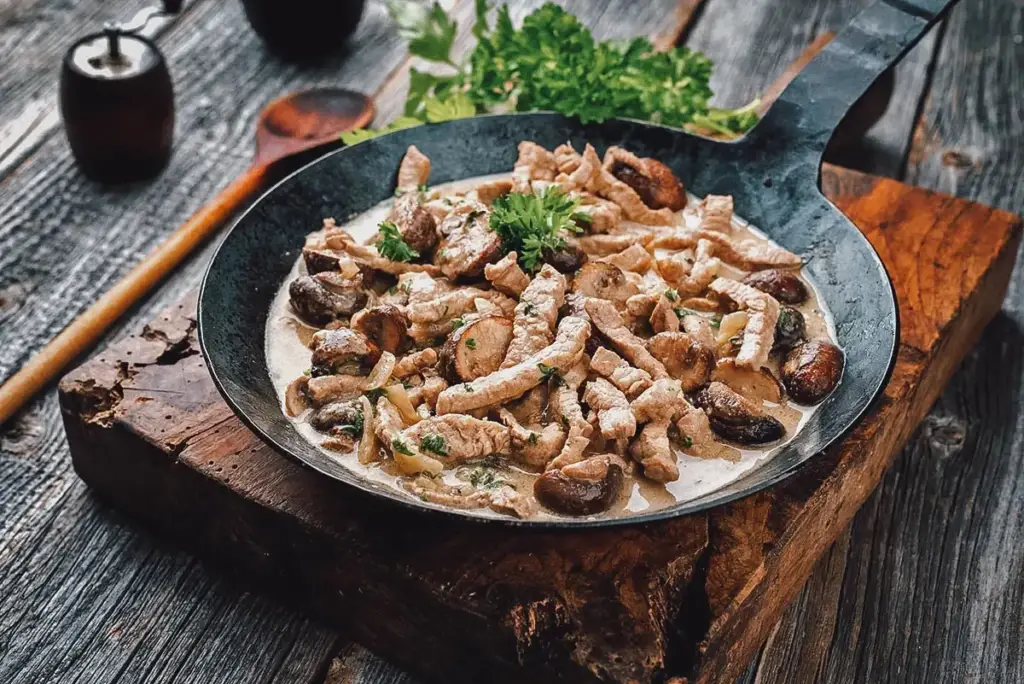
Swiss food – Zürcher Eintopf History and Background:
Zürcher Eintopf, translating to “Zurich One-Pot,” is a traditional Swiss stew that has its roots in the rich culinary heritage of Zurich. Historically, this dish served as a hearty and nourishing meal for the working class during cold winter days.
Zürcher Eintopf showcases the simplicity and efficiency of Swiss cooking, featuring a blend of flavors that has stood the test of time.
Swiss food – Zürcher Eintopf Ingredients
- 500g beef, cubed
- 4 potatoes, diced
- 2 leeks, sliced
- 3 carrots, sliced
- 1 celery root, diced
- 1 onion, finely chopped
- 2 cloves garlic, minced
- 2 liters beef broth
- 2 bay leaves
- 1 teaspoon thyme
- Salt and pepper to taste
Swiss food – Zürcher Eintopf Recipe
1. Searing the Beef:
- In a large pot, sear the cubed beef until browned on all sides.
- Remove the beef and set it aside.
2. Sautéing Aromatics:
- In the same pot, sauté the chopped onion and minced garlic until translucent.
- Add the sliced leeks and continue sautéing until softened.
3. Assembling the Stew:
- Return the seared beef to the pot.
- Add diced potatoes, sliced carrots, diced celery root, bay leaves, and thyme.
- Pour in the beef broth to cover the ingredients.
- Season with salt and pepper to taste.
4. Simmering:
- Bring the stew to a boil, then reduce the heat to a simmer.
- Cover and let it simmer for approximately 1.5 to 2 hours or until the beef and vegetables are tender.
5. Adjusting Seasoning:
- Taste and adjust the seasoning if needed.
6. Serving:
- Discard the bay leaves before serving.
- Ladle Zürcher Eintopf into bowls and serve piping hot.
Swiss food – Älplermagronen (Alpine Macaroni)

History and Background of Älplermagronen (Alpine Macaroni)
Älplermagronen, or Alpine Macaroni, has deep roots in Swiss Alpine traditions. Originating in the mountainous regions, this dish was a hearty and practical meal for Alpine farmers and herders. Combining pasta, potatoes, cheese, and onions, Älplermagronen served as a sustaining and flavorful dish during the colder months.
Today, it has evolved into a beloved Swiss comfort food, often enjoyed in a communal setting, celebrating the simplicity of Alpine ingredients.
Swiss food – Älplermagronen (Alpine Macaroni) Ingredients
- 2 cups elbow macaroni
- 2 large potatoes, peeled and sliced
- 1 onion, finely chopped
- 2 cups Gruyère cheese, shredded
- 2 cups Emmental cheese, shredded
- 1 1/2 cups whole milk
- Salt and pepper, to taste
- 4 tbsp butter
- Fresh parsley, chopped (for garnish)
Swiss food – Älplermagronen (Alpine Macaroni) Recipe
1. Prepare Ingredients
- Preheat the oven to 375°F (190°C).
- Cook the elbow macaroni according to package instructions.
- Boil the sliced potatoes until just tender.
- In a pan, sauté the chopped onion in 2 tablespoons of butter until translucent.
2. Layer the Ingredients
- In a baking dish, layer half of the cooked macaroni.
- Add a layer of half of the boiled potatoes.
- Sprinkle half of the sautéed onions over the potatoes.
- Mix half of the shredded Gruyère and Emmental cheeses.
- Repeat the layers with the remaining macaroni, potatoes, onions, and cheese.
3. Season and Add Milk
- Season the layers with salt and pepper to taste.
- Pour the whole milk evenly over the layers.
4. Bake
- Dot the top with the remaining butter.
- Bake in the preheated oven for about 30 minutes or until the top is golden and bubbly.
5. Garnish and Serve
- Remove from the oven and let it rest for a few minutes.
- Sprinkle with freshly chopped parsley before serving.
Serving Information
- Serves: 4
- Estimated Cooking Time: 45 minutes
- Calories: Approximately 500 calories per serving (may vary based on specific ingredients and portions).
Älplermagronen is a delicious and wholesome Alpine dish that encapsulates the heartiness of Swiss mountain cuisine. Its history and simplicity make it a delightful representation of traditional Swiss comfort food.
Swiss food – Zürcher Eintopf Presentation
Serve Zürcher Eintopf in deep bowls, allowing the rich aroma to tantalize the senses. The combination of tender beef and hearty vegetables makes for a comforting and satisfying meal.
Swiss cuisine – Zürcher Eintopf Drinks
Pair Zürcher Eintopf with a glass of Swiss red wine or a mug of warm apple cider for a cozy and complete dining experience.
Savor the warmth and nourishment of Zürcher Eintopf, a classic Swiss stew that embodies the essence of comfort and tradition.
Swiss Desserts
Swiss Food – Cholermüs – Swiss Pancake

Cholermüs is a traditional Swiss dish, and it’s essentially a savory Swiss pancake made with a variety of ingredients. Here’s a breakdown of its history, ingredients, and a comprehensive recipe:
Cholermüs – History and Background
- Cholermüs is a dish originating from the Swiss canton of Appenzell.
- It’s often associated with the culinary traditions of the region, known for its hearty and rustic cuisine.
- The name “Cholermüs” is derived from the Swiss German words “Choler” meaning cabbage and “Müs” meaning mush, indicating that cabbage is a key ingredient in this dish.
Swiss Food – Cholermüs – Ingredients
- 2 cups all-purpose flour
- 2 cups milk
- 4 large eggs
- 1/2 teaspoon salt
- 1/4 teaspoon black pepper
- 1/4 teaspoon nutmeg (optional)
- 1 small head of cabbage, finely shredded
- 1 large onion, finely chopped
- 200g bacon or ham, diced
- 2 tablespoons vegetable oil or butter (for cooking)
Swiss Food – Cholermüs – Recipe
Prepare the Batter
- In a large mixing bowl, whisk together the flour, milk, eggs, salt, pepper, and nutmeg until you have a smooth batter. Let it rest for about 30 minutes.
Prepare the Filling
- In a large skillet, sauté the diced bacon or ham until it’s slightly crispy.
- Add the finely chopped onion and cook until it becomes translucent.
- Add the shredded cabbage to the skillet and cook until it’s tender. Season with salt and pepper to taste.
Combine Batter and Filling
- Mix the prepared cabbage and bacon mixture into the rested batter. Ensure an even distribution.
Cooking the Pancake
- Heat a non-stick skillet or a traditional Swiss “Bräter” (pancake pan) over medium heat.
- Add a bit of oil or butter to coat the bottom of the pan.
- Pour a ladleful of the batter mixture into the pan, spreading it out evenly.
- Cook the pancake until the edges start to turn golden brown, and bubbles form on the surface.
- Carefully flip the pancake and cook the other side until it’s cooked through and golden brown.
Serve
- Once cooked, transfer the Cholermüs to a serving plate.
- Cut it into wedges and serve hot.
Cholermüs is often enjoyed with applesauce or a side salad. This savory Swiss pancake is a delicious representation of the hearty and flavorful dishes found in Swiss cuisine.
Swiss Food – Vermicelles (Sweet Chestnut Purée)

Swiss Food – Vermicelles History and Background:
Vermicelles is a beloved Swiss dessert that originated in the canton of Ticino. Its name, derived from the Italian word “vermicelli” meaning little worms, aptly describes the dessert’s appearance.
Traditionally enjoyed during the chestnut harvest season, Vermicelles showcases the versatility of chestnuts in Swiss cuisine and has become a cherished treat across the country.
Swiss Cuisine – Vermicelles Ingredients
- 500g chestnuts, scored
- 200g sugar
- 250ml milk
- 1 vanilla pod, split
- A pinch of salt
- 200ml heavy cream
- Chocolate shavings (for garnish)
Swiss Food – Vermicelles Recipe
1. Preparing Chestnuts
- Score an “X” on the flat side of each chestnut using a sharp knife.
- Boil the chestnuts in water for about 20 minutes.
- Peel the chestnuts while they are still warm.
2. Making Chestnut Puree
- In a saucepan, combine the peeled chestnuts, sugar, milk, split vanilla pod, and a pinch of salt.
- Simmer the mixture over low heat until the chestnuts are soft.
- Remove the vanilla pod and blend the chestnut mixture into a smooth puree using a food processor.
3. Whipping Cream
- In a separate bowl, whip the heavy cream until stiff peaks form.
- Gently fold the whipped cream into the chestnut puree until well combined.
4. Serving
- Transfer the Vermicelles mixture into serving glasses or bowls.
- Garnish with chocolate shavings.
Swiss Food – Vermicelles Presentation
Serve Vermicelles in individual glasses or bowls, showcasing the smooth chestnut puree topped with decadent chocolate shavings. This delightful dessert captures the essence of Swiss autumn traditions.
Swiss Food – Vermicelles Drinks
Pair Vermicelles with a hot cup of Swiss coffee or a sweet dessert wine for a truly indulgent experience.
Swiss Cuisine – Nusstorte (Nut Tart)
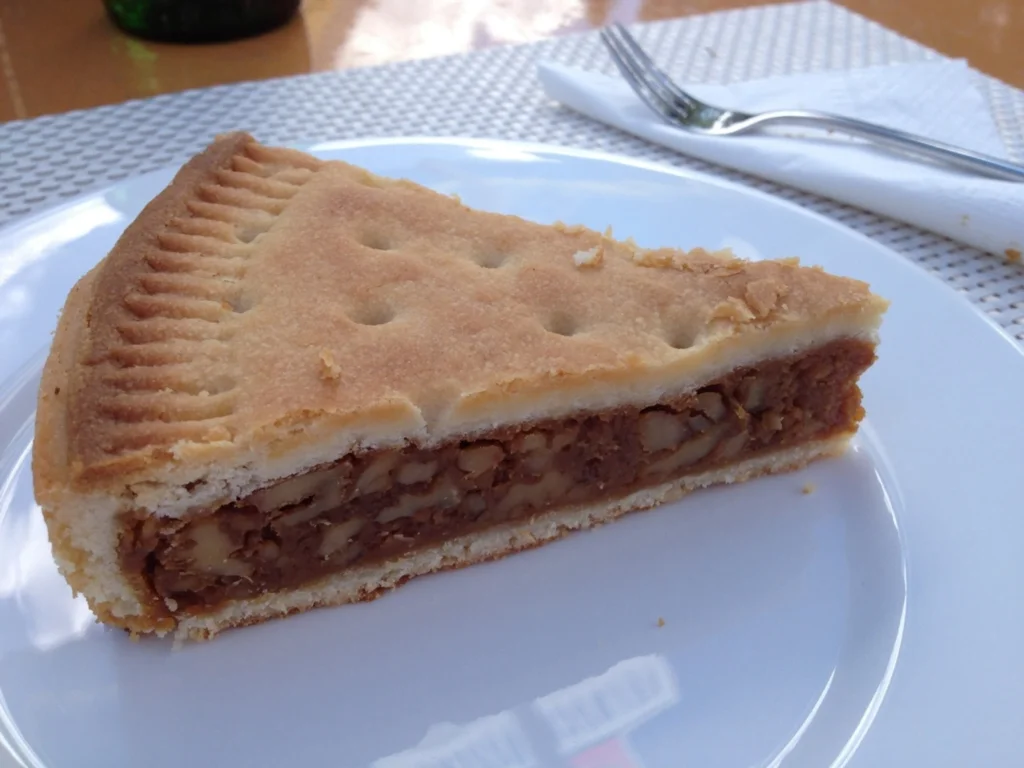
Swiss Food – Nusstorte – History and Background:
Nusstorte, literally translating to “Nut Tart” in English, is a traditional Swiss pastry hailing from the Engadin region in the canton of Graubünden. This delectable treat is a culinary testament to the rich tradition of using locally sourced ingredients in Swiss baking.
With its flaky crust and a filling bursting with nuts, Nusstorte has become a beloved dessert enjoyed during various celebrations and gatherings.
Swiss Food – Nusstorte Ingredients
For the Crust
- 250g all-purpose flour
- 125g cold butter, diced
- 100g sugar
- 1 egg
- A pinch of salt
For the Filling
- 200g walnuts, finely chopped
- 200g sugar
- 150g honey
- 100g heavy cream
- 1 teaspoon vanilla extract
- Zest of 1 lemon
- A pinch of cinnamon
- A pinch of salt
Swiss Food – Nusstorte Recipe
1. Making the Crust:
- In a food processor, combine flour, cold diced butter, sugar, egg, and a pinch of salt.
- Pulse until the mixture resembles coarse crumbs.
- Gather the dough into a ball, wrap in plastic wrap, and refrigerate for at least 30 minutes.
2. Preparing the Filling:
- In a saucepan, combine chopped walnuts, sugar, honey, heavy cream, vanilla extract, lemon zest, cinnamon, and a pinch of salt.
- Cook over medium heat, stirring continuously, until the mixture thickens into a sticky, nutty filling. Allow it to cool.
3. Assembling the Nusstorte:
- Preheat the oven to 180°C (350°F).
- Roll out the chilled dough on a floured surface and line a tart pan.
- Spread the cooled nut filling evenly over the crust.
4. Baking:
- Bake in the preheated oven for approximately 30-35 minutes or until the crust is golden brown.
5. Serving:
- Allow the Nusstorte to cool completely before slicing.
- Serve at room temperature and enjoy the nutty goodness.
Swiss Food – Nusstorte Presentation
Serve Nusstorte in elegant slices, showcasing the beautiful layers of flaky crust and rich nut filling. The golden brown exterior and the aroma of toasted nuts make this pastry a visual and olfactory delight.
Swiss Food – Nusstorte Drinks
Pair Nusstorte with a strong cup of Swiss coffee or a sweet dessert wine to complement its nutty flavors.
Delight in the rich flavors and textures of Nusstorte, a Swiss Nut Tart that perfectly captures the essence of Swiss baking traditions.
Swiss Cuisine – Chocolate Cake Swiss Recipe

History and Background – Chocolate Cake Swiss Recipe
Switzerland is renowned for its exceptional chocolate, and the Swiss Chocolate Cake is a testament to this rich culinary tradition. Combining the finest Swiss chocolate with a moist and tender cake, this dessert has become a symbol of Swiss indulgence.
Whether enjoyed as a treat during special occasions or as a comforting slice with coffee, Swiss Chocolate Cake reflects the craftsmanship and passion for chocolate that defines Swiss sweets.
Swiss Food – Chocolate Cake Swiss Recipe Ingredients
For the Cake:
- 200g high-quality Swiss chocolate, chopped
- 200g unsalted butter
- 200g granulated sugar
- 4 large eggs
- 200g all-purpose flour
- 1 teaspoon baking powder
- A pinch of salt
For the Chocolate Ganache:
- 150g high-quality Swiss chocolate, chopped
- 150ml heavy cream
- 2 tablespoons unsalted butter
Swiss Food – Chocolate Cake Swiss Recipe
Preparing the Cake:
- Preheat the oven to 180°C (350°F). Grease and flour a round cake pan.
- In a heatproof bowl, melt 200g of Swiss chocolate and butter over a double boiler. Let it cool slightly.
- In a separate bowl, whisk together sugar and eggs until light and fluffy.
- Gradually add the melted chocolate mixture to the egg mixture, stirring continuously.
- In another bowl, sift together flour, baking powder, and a pinch of salt.
- Gently fold the dry ingredients into the chocolate mixture until just combined.
- Pour the batter into the prepared cake pan.
Baking:
- Bake in the preheated oven for approximately 25-30 minutes or until a toothpick inserted into the center comes out with moist crumbs.
- Allow the cake to cool completely.
Making the Chocolate Ganache:
- In a heatproof bowl, combine 150g of Swiss chocolate, heavy cream, and butter.
- Melt the mixture over a double boiler, stirring until smooth.
- Let the ganache cool until it thickens slightly.
Assembling:
- Once the cake is cooled, spread the chocolate ganache evenly over the top and sides.
Serving:
- Slice and serve the Swiss Chocolate Cake, savoring the rich chocolate flavor and velvety texture.
Presentation:
Present the Swiss Chocolate Cake on a cake stand or plate, showcasing the glossy chocolate ganache. Garnish with chocolate shavings or a dusting of cocoa powder for an elegant touch.
Drinks:
Pair the indulgent Swiss Chocolate Cake with a cup of strong Swiss coffee or a glass of dessert wine for a delightful sensory experience.
Conclusion
Swiss cuisine is a culinary symphony that harmonizes precision, quality, and a celebration of local ingredients. From the iconic fondue to the hearty Rösti and sweet delights like Vermicelles and Nusstorte, Swiss gastronomy invites you on a journey of flavors that resonate with both tradition and innovation.
FAQ’s
1. What makes Swiss cuisine unique?
Swiss cuisine is unique due to its blend of German, French, and Italian influences, precision in preparation, and emphasis on local, seasonal ingredients.
2. Is cheese fondue only served in winter?
While cheese fondue is popular in winter, it can be enjoyed throughout the year. Its convivial nature makes it suitable for various occasions.
3. What are the health benefits of Swiss cuisine?
Swiss cuisine, with its emphasis on fresh, locally sourced ingredients, offers a balanced and nutritious diet, promoting overall well-being.
4. What is the significance of Rösti in Swiss cuisine?
Rösti, a Swiss potato pancake, is a staple side dish known for its simplicity and versatility. It complements various main courses and is a symbol of Swiss comfort food.
5. Why is chocolate significant in Swiss culture?
Switzerland’s expertise in chocolate craftsmanship has made Swiss chocolate world-famous. It is often associated with quality, precision, and a sweet indulgence.
6. Can I try Swiss cuisine outside of Switzerland?
Yes, Swiss cuisine is celebrated globally. Many Swiss dishes, especially fondue and chocolate, are enjoyed in restaurants worldwide.

